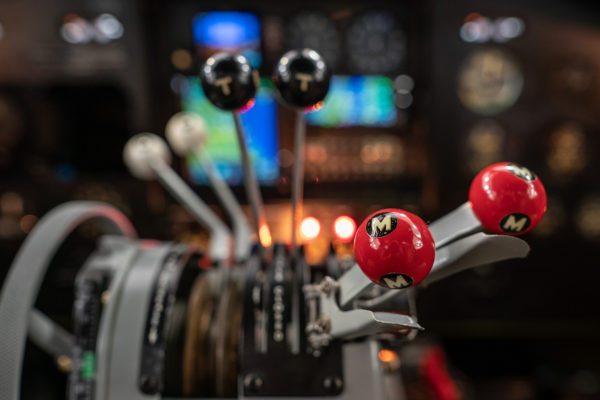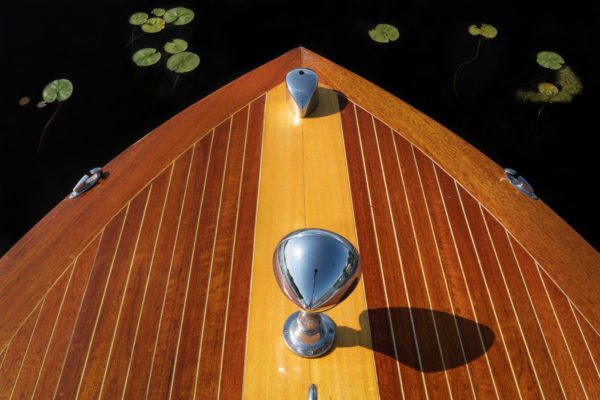The announcement by Sigma that the Art series of prime lenses would be offered in Sony E mount definitely put a smile on the face of this user of Sony cameras. While I tend to use camera bodies from several manufacturers, I have been finding several aspects of the Sony system are better fitting the needs of my current clients. And while my Sigma lenses perform great using the Sigma MC-11 Adapter, offering lenses in Sony E mount, to me, means recognition as well as commitment by Sigma for the growing number of Sony shooters. To put an even bigger smile on my face, I had the privilege to use four of the E mount Art primes this summer.
While zoom lenses tend to get the most use in my newspaper and aviation work, a prime lens just seems to scream “creativity” to me. A prime lens slows me down a bit so I can feel the photograph I see coming together in front of me. It feels more deliberate. To many, a prime lens might relate to extreme sharpness, shallow depth of field when shot wide open and beautiful bokeh- but to me it also means I don’t just stand in one spot and zoom, but have to physically move in or out to align the image in my imagination with the reality in front of me.
I found that especially true when asked to take some outdoor portraits of my friend Anneliese. With the new E mount Sigma 85mm f1.4 Art lens on a Sony A9 camera, I set out to photograph her with the concept of shallow depth of field so the concentration went to her sharply focused eyes. To do that, I used not only continuous AF, but also eye-AF on the camera. I like that continuous AF is always compensating for little movements by the subject. And eye-AF is a Sony setting that allows the camera to lock in on Anneliese’s eye and stay in focus despite the movements of her head or my movements to reframe the composition. One of the advantages of the new Sigma E mount primes is they officially support continuous Auto-focus as well as quicker eye-AF. I like shoot in silent mode and with the new lenses, there is no searching noise.

Putting these attributes to work on a real newspaper assignment, I took the 85mm Art lens on a Sony A9 to photograph a local music festival. I chose the 85mm again because I prefer staying tight on the action or subject. I was amazed at the fast continuous auto focus under extreme lighting conditions. And the sharpness blew me away.



An assignment to shoot the controls for a World War ll airplane for Flying Magazine was the perfect job for the 24mm Art. I wanted the controls to be prominent in the photograph with the background dropping out of focus. I always use back button focus, and in doing so, prefer continuous auto focus. I wanted to keep the natural lighting in the cockpit, which resulted in hand holding the camera at a slow shutter speed. Since the new Sigma E mount lenses support Sony Steady Shot, or in body image stabilization, it was easy keeping the subject in focus at 1/15th of a second.

I think after using prime lenses for a while, you start to “see” a composition based on a focal length. That is why I chose the 35mm Art lens to capture dawn along a fishing dock. Mounted on a Sony A7R3 camera with a Tiffen variable ND filter, 35mm gave me the composition I was looking for. And while the Sigma MC-ll is a fantastic adapter allowing you to use your Sigma lenses on your Sony camera, it is also reassuring to know that with early morning dew settling on your camera, you are using a lens with a brass mount, weather seal and a solid connection.

There are times when I just head out looking for whatever photos I might come across. I find those are good times to put on a prime lens and use it as a creative exercise. It’s a fun little exercise for me because it pushes me to be creative. And that creativity can show up in some of the strangest places. Such as…lunch. If you’re active on social media, you might be one to take a photo of a great meal to share with your friends. And most of the time it’s easy to just grab your phone and snap a photo. But a real lens and a real camera do a much better job. And with so many of today’s cameras able to transfer photos using built-in wifi, it takes about 30 seconds more to raise the bar from a phone photo to a great photo. In this case, I just happened to have my Sony A7R3 with the Sigma 50mm Art with me at lunch. And the lighting…the colors…the cheese curds being used to make a Wisconsin Cheeseburger just screamed “take my picture!” And I did. And a quick transfer from camera to phone to social media and I had shared a great meal, a great restaurant, and a great photo with my friends.

The Sigma Art series of prime lenses, now available in Sony E mount, are a fantastic addition to the Sigma family. I’ve tried to show you the practical and creative uses I’ve found for the lenses, but it’s also important to note the technical side of these lenses:
· Continuous Autofocus is now supported
· Does provide a rubber to seal at the mount to protect against dust. MC-11 is not weather sealed
· Brass mount
· Quicker Eye-AF
· compatible with video
· less ‘wobbling’ on the AF
Steady shot works with both EF 50 and MC11 as well as Emount 50 art on R3 and a9. AF-c makes noise and minor searches with EF/MC combo but no noise at all with E mount.





